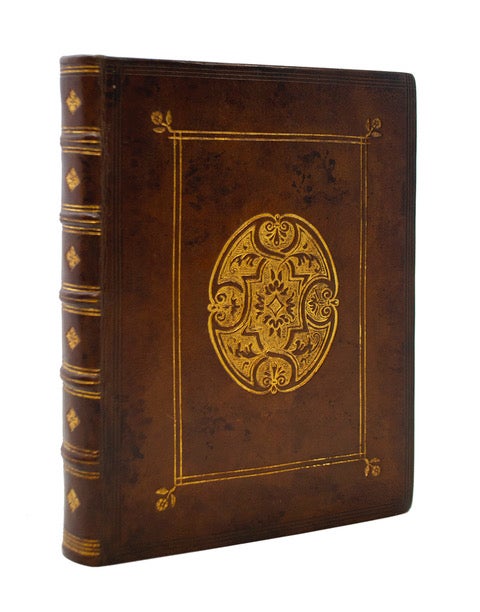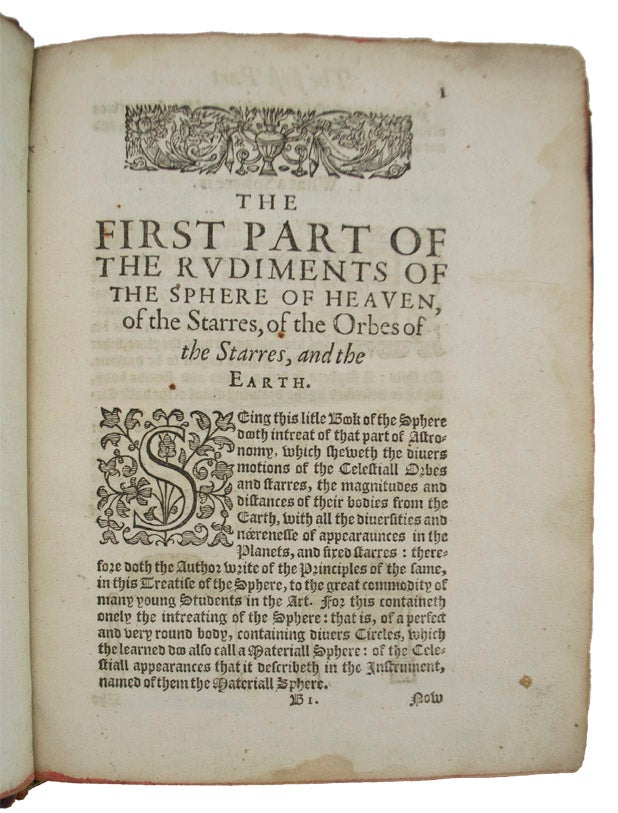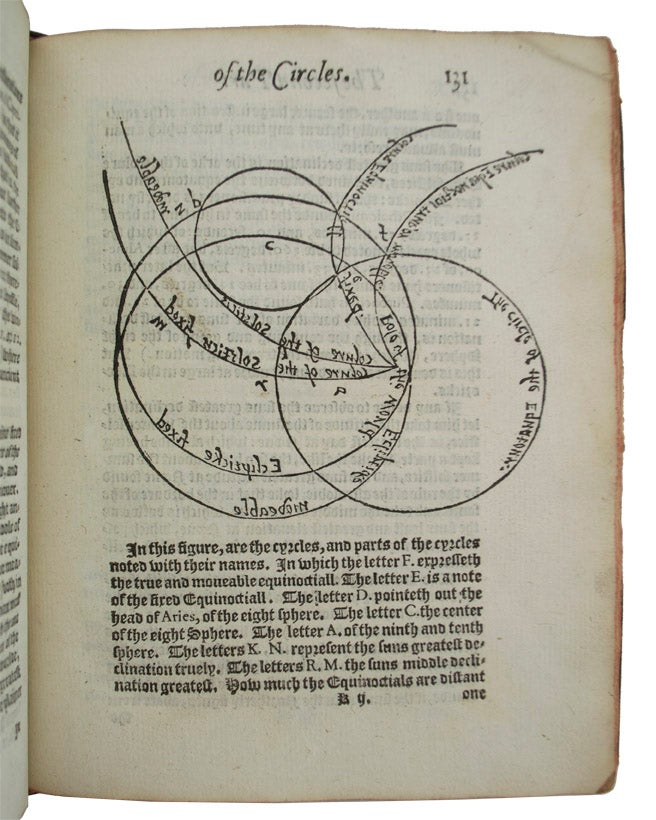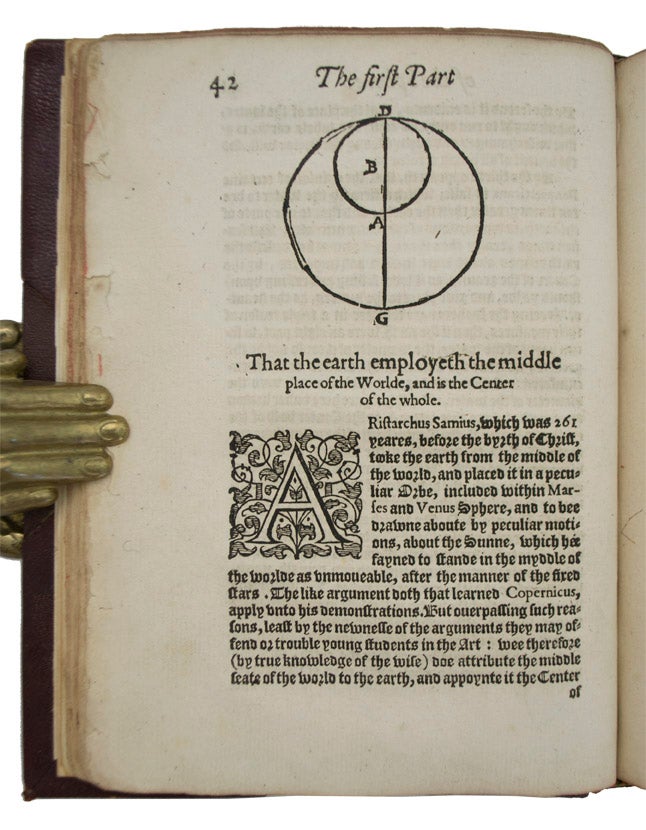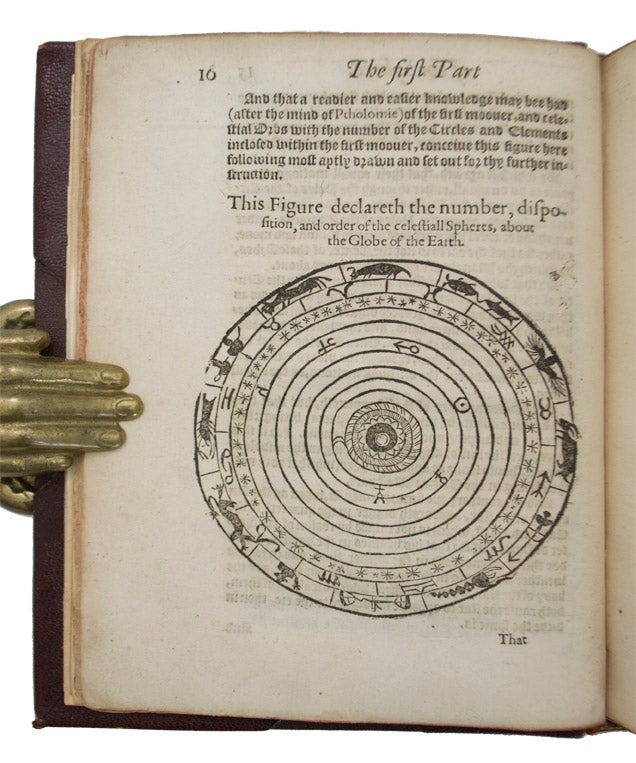The Schoole of Skil: Containing Two Bookes
London: Printed by T. Judson, for W. Jaggard, 1599.
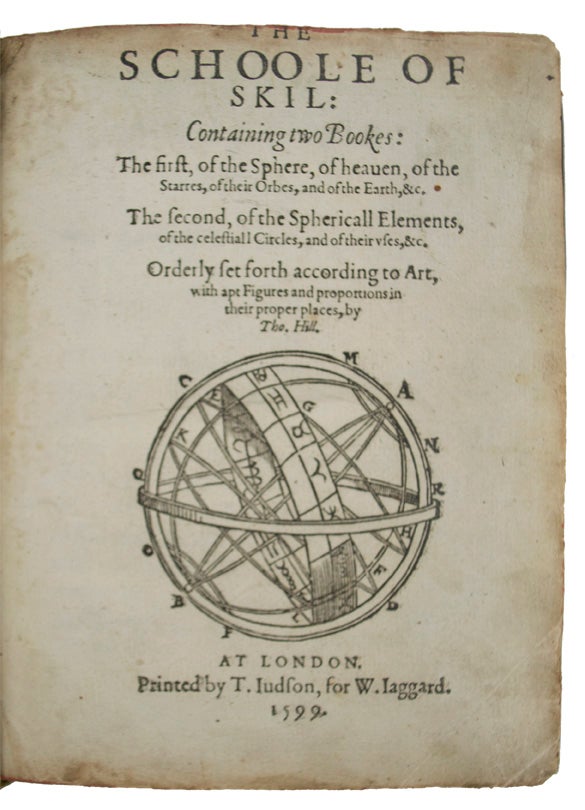

The Schoole of Skil: Containing Two Bookes
London: Printed by T. Judson, for W. Jaggard, 1599. First edition. First Edition. Two parts in one octavo volume (7 1/4 x 5 5/8 inches; 185 x 142 mm). Continuous pagination. [6], 267, [1, blank], [2, table of contents] pp. Lacking initial blank [sig. "A"]. With Spherical woodcut device on title-page, and numerous woodcut illustrations, diagrams and initials throughout. This has been the only copy at auction in the past 30 years. All English 16th-Century books on Astronomy are rare. Beautifully bound to style in full calf. Boards triple ruled in blind and double ruled in gilt with gilt flower corner devices. Central gilt lozenge to boards. Spine stamped and
ruled in gilt. All edges dyed red. Newer endpapers. Top margin of title-page trimmed close, just touching first word. Fore-edge of leaf D5 frayed. Some marginal dampstaining to pages 49-56 and 233-final leaf. Pages 118-119 misnumbered 102-103, and 122-123 misnumbered 106-107. Leaves M5 and M6 misbound between M2 and M3,
but all leaves present and complete. Leaf edges around "Table of contents" a bit darkened and last leaf of "Table" with a repaired marginal tear, not affecting text. Overall very good.
Thomas Hill [pseud. Didymus Mountaine] was a writer and translator. He "knew Latin and Italian and he became known as a translator of popular books on science and the supernatural...In 1560, the year of his first extant almanac, he was described as a leading almanac-maker... A mathematical and astronomical textbook, The Schoole of
Skil, which rejects Copernicanism, was printed [posthumously] by William Jaggard in 1599." (Oxford DNB). "Apart from Blundeville...the only other 16th century astronomical writer of any significance who explicitly rejected the Copernican system was Thomas Hill, who died about 1575" (Russel).
"Hill alludes to the fact that the idea of heliocentrism was ancient and familiar. Medieval and early modern scholars all knew about Aristarchus, but they believed they had very convincing arguments (drawn from Aristotle) that the earth was in the center of the cosmos and was stationary. Although Hill is about to launch into a number of arguments against Copernicus’ heliocentric model of the cosmos, he nonetheless accords him a certain respect, referring to him as “that learned Copernicus.” And indeed, if you read the entire book, you find numerous positive references to
Copernicus. Hill often uses Copernicus’ calculations for various astronomical values like the length of the solar year. Many early readers of Copernicus used the mathematical models in On the Revolutions for calculating planetary positions. Although very few sixteenth-century readers accepted the physical reality of heliocentrism, they still saw considerable value in Copernicus’ work" (Crowther).
ESTC S104125. STC 13502. (Item #3030)

